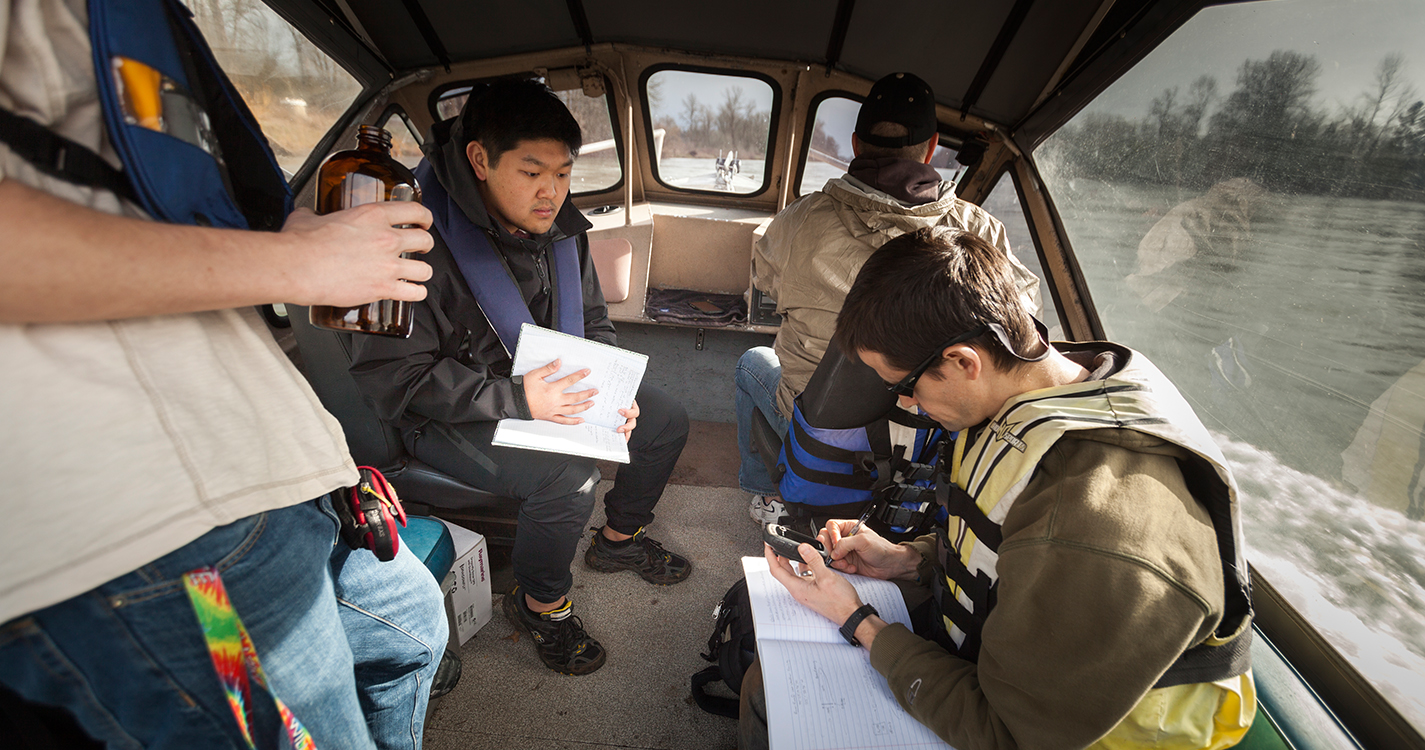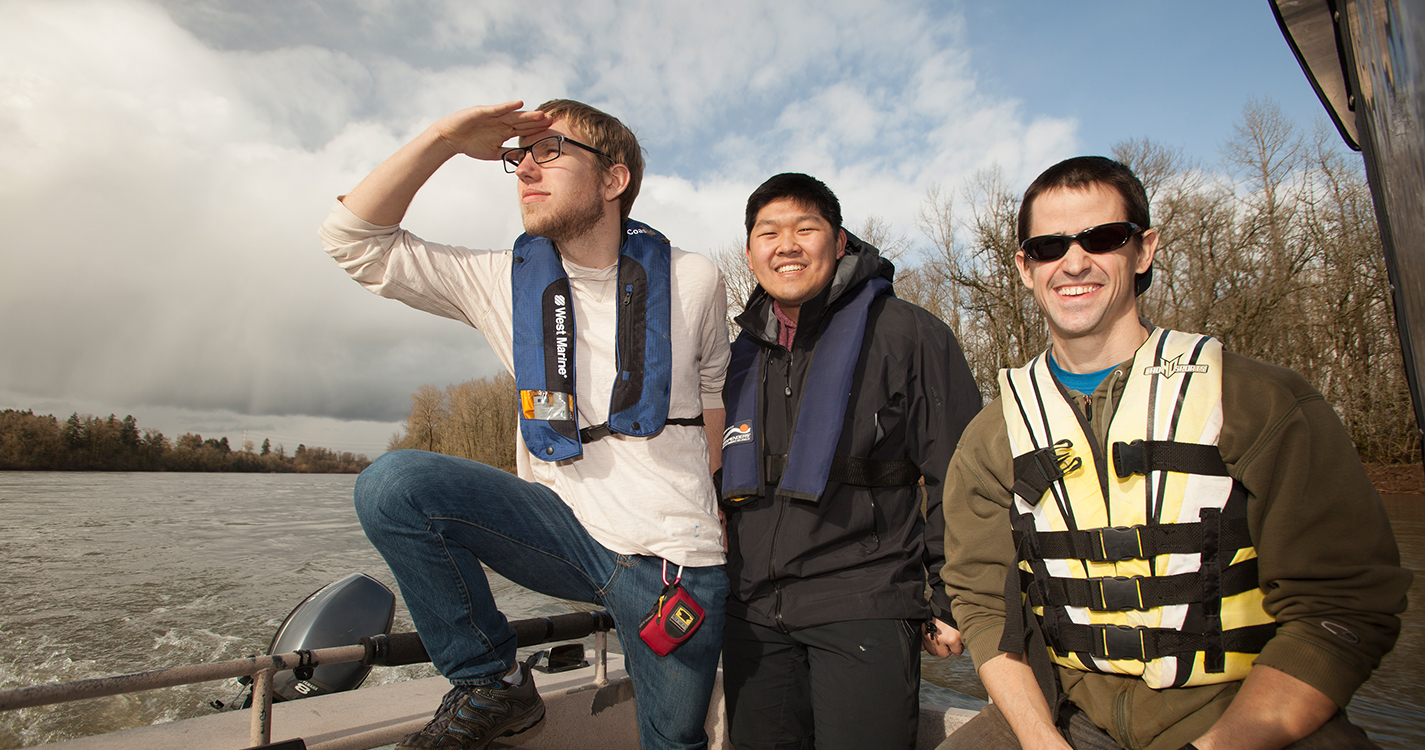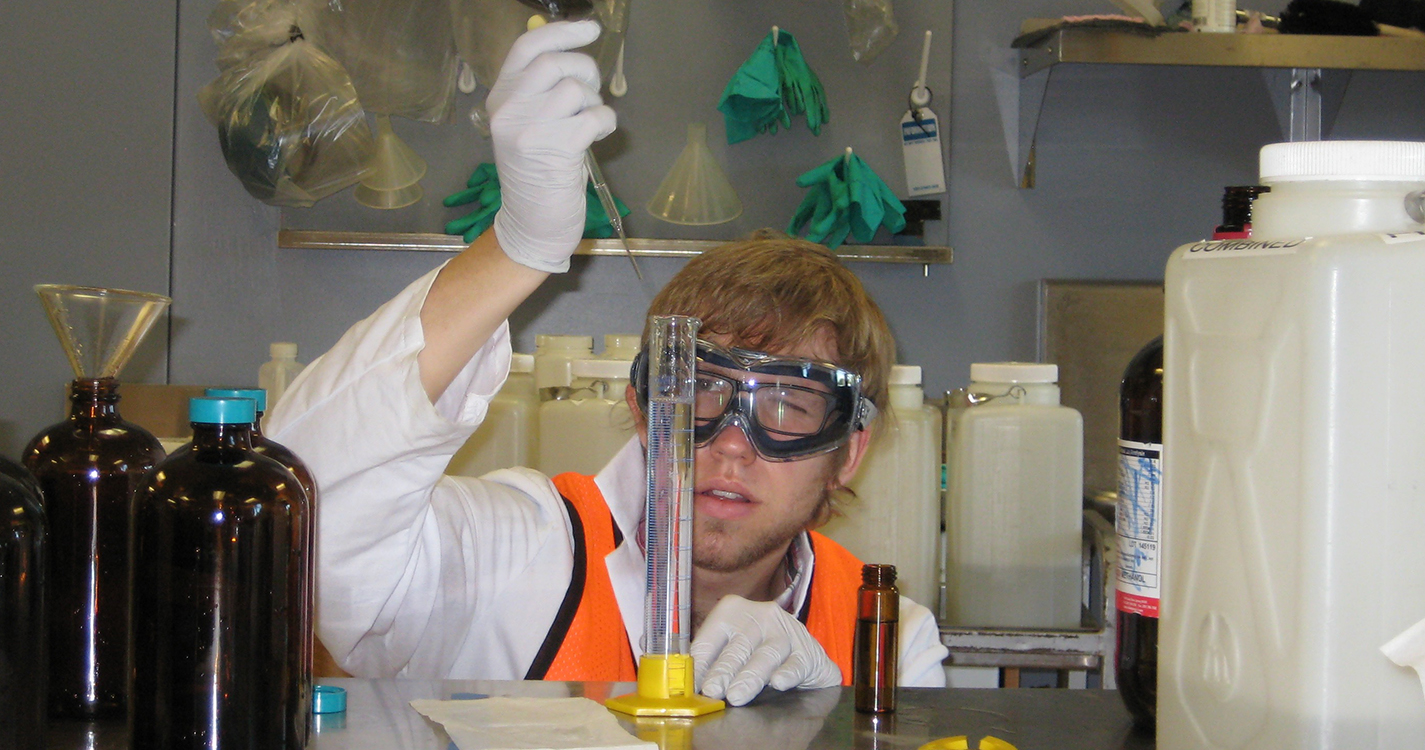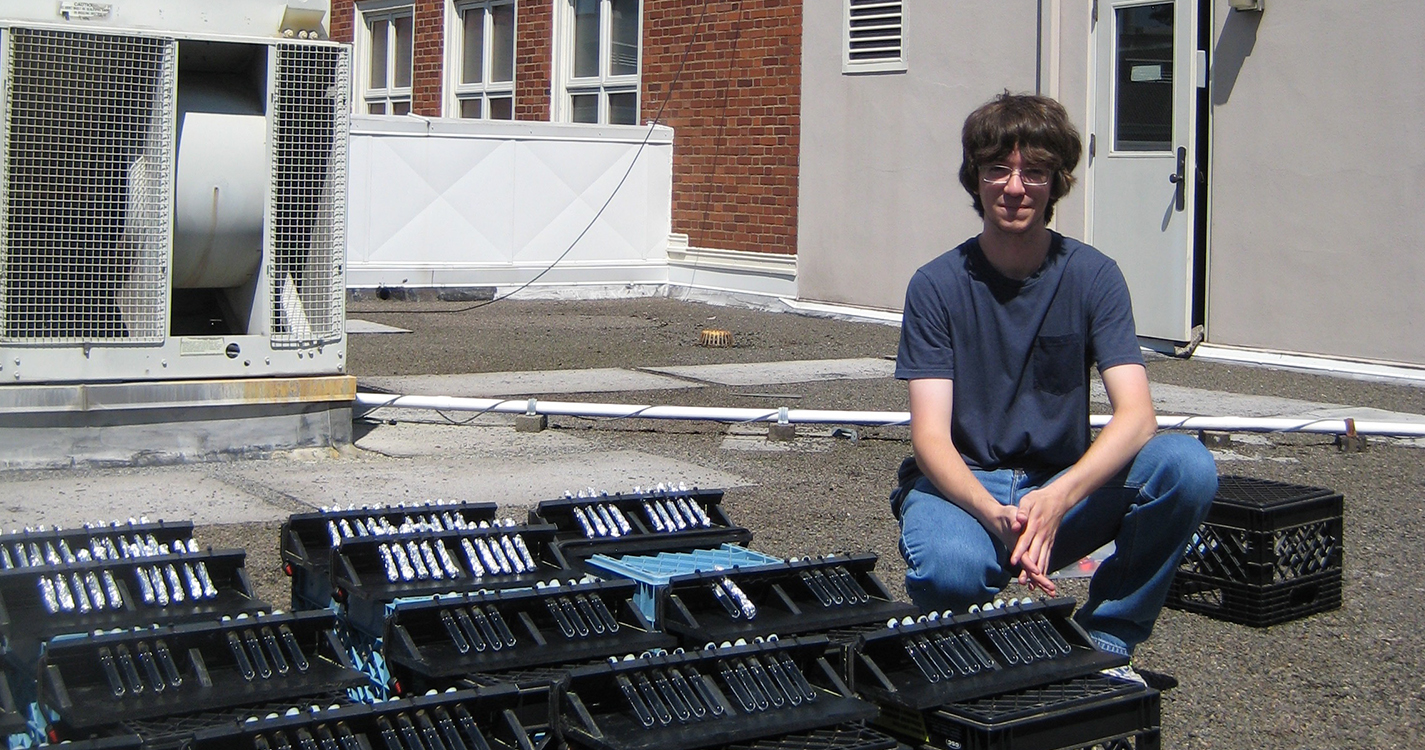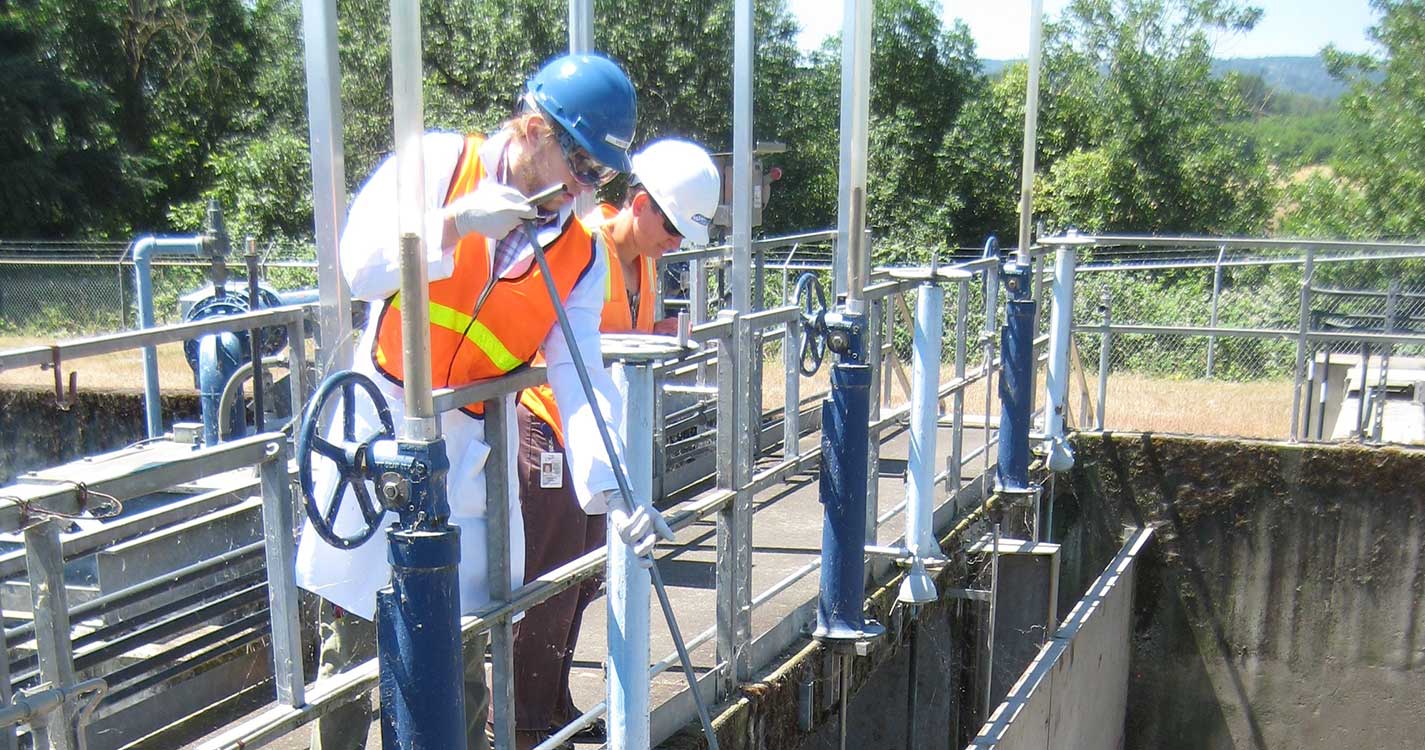Logan Vine ’17 recently spent an afternoon in a boat collecting samples from the Willamette River. More than just a break from the classroom, the activity gave the chemistry senior valuable experience in working on a National Science Foundation-funded project.
Vine was helping conduct research with Assistant Professor of Chemistry David Griffith, who received a $325,157 National Science Foundation (NSF) grant to investigate the chemical factors that control halogenated estrogen and what happens to the hormone when it’s released into aquatic environments.
Every day, billions of gallons of treated sewage flow into rivers and oceans, impacting the source of our drinking water. Sewage streams contain a large amount of steroidal estrogens — whether naturally secreted or the synthesized form found in pharmaceuticals — that can potentially harm aquatic environments.
Even miniscule amounts of the hormone’s most potent form — so-called “free” estrogens that freely pass into cells, tightly bind with receptors and cause biological reactions — can disrupt an aquatic organism’s endocrine system and promote reproductive problems. So, male fish can grow female sex organs.
But few researchers have examined the fate of halogenated estrogens — a form of the hormone created during the disinfection stage of sewage treatment — in wastewater effluent. Evidence suggests this estrogen can be harmful to aquatic life, and little is known about potential effects for humans.
Griffith received the three-year NSF grant through the Research in Undergraduate Institutions Program, which supports faculty at predominantly undergraduate institutions because of their critical role in science and technology through their substantial contributions to research and education.
The grant covers the cost of undergraduate summer research, a postdoctoral scholar and broader educational outreach, as well as a collaboration with Oregon State University, where Willamette students have access to scientists and equipment at its Mass Spectrometry Center.
Vine is using the mass spectrometer to measure the amount of 23 different estrogens in Salem’s wastewater. He’s also checked the levels of estrogens in the Willamette River. Other Willamette students are investigating how fast estrogen degrades by exposing it to wastewater and the sun.
Vine is excited to play a role in a large research project relevant to protecting aquatic life. He appreciates Willamette’s many research opportunities, as well as the ability to work with and learn from professors outside of class.
“I think it's just the most interesting thing — understanding these natural processes that are the basis for a lot of environmental concerns,” he says. “When you get an education in chemistry, it really helps to connect dots.”
Griffith says Willamette’s strong support for research — including its wide variety of student opportunities, faculty teaching loads that allow time to pursue research, and help from the Office for Faculty Research and Resources — helped him secure the grant.
“All of these things say Willamette is supportive of research,” he says, “and it’s one of the reasons I’m here.”
The topic of estrogen in coastal waters isn’t a new one for Griffith. His interest in endocrine-disrupting chemicals started while he was a PhD student at Massachusetts Institute of Technology and Woods Hole Oceanographic Institution. He wanted to evaluate whether the majority of estrogen found in the Massachusetts Bay stemmed from wastewater. The answer turned out to be no. He’d guessed most of the estrogen came from sewage sources, but considering the high levels in the ocean, some other major source such as marine vertebrates had to exist.
“We found in that project that halogenated estrogens were a pretty important piece of the puzzle,” he says. “The work I’m doing here is partly following up to see what things look like in Salem.”
Ever since he arrived at Willamette three years ago, Griffith and his research students have asked a few simple questions: What types of estrogens enter the river, and once they get there, what happens? How do they degrade, and how fast? What levels of halogenated estrogen exist in the river?
The science is relevant and timely. National concern over water quality has heightened in recent years, particularly after thousands of people were exposed to lead-tainted water in Flint, Michigan.
Griffith says, “By studying a handful of representative chemicals like these estrogens in-depth, the research can be applied to understanding the way other chemicals in wastewater affect the ecosystem and human health.”
Griffith will produce of a few podcasts about his work for PRI and other major radio distributors with Ari Daniel, a freelance science reporter who has contributed to PBS’ science television series NOVA, NPR’s All Things Considered, Radiolab and others.

